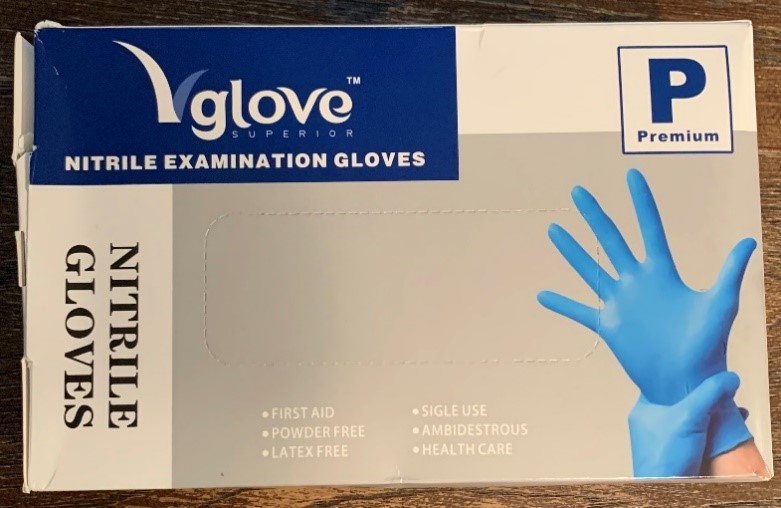We are in the midst of disposable glove shortages due to the global COVID-19 pandemic. Glove usage around the world has skyrocketed, and there is not enough capacity to fulfill the demand. In addition to supply disruptions, prices are increasing dramatically due to the imbalance between supply and demand.
Unfortunately, we are seeing an increase in fraudulent activity and counterfeiting as scammers seek to take advantage of desperate buyers. In fact, The Wall Street Journal quoted Elara Brands CEO Dan Grinberg in a new exposé published this week about this widespread problem, “Brokers Peddle Fake Medical Gloves Amid Coronavirus Shortages.”
Some scammers are taking prepayments for gloves and disappearing, and others are packaging low-grade or defective gloves and selling them as A-grade gloves.
This puts essential workers—healthcare professionals, first responders, law enforcement, food workers, and cleaning crews—at elevated levels of risk as they use fraudulent personal protective equipment (PPE).
Read on to learn how you can protect those around you from PPE fraud.
Fraudulent PPE: What to Look For
Unfortunately, many customers are unknowingly purchasing counterfeit gloves. Yes – you may be paying a higher price for a lower level of protection.
Here’s an example of a fraudulent glove in the market right now – it’s packaged as Nitrile Exam while actually containing a lower grade stretch vinyl (PVC) glove. There are a few problems with this item visible at a quick glance:

- Brand. They are being distributed under the trademark name Vglove. Some Vglove products may be authentic; however, the company has issued a fraud warning stating that scammers are using their brand to sell fake gloves.
- Color & Material. They are blue, a common nitrile color, and labeled as nitrile examination gloves, but upon inspection they are clearly made of PVC. Mislabeling is a violation of FDA medical device regulations. It’s also unethical.
- Barcode. The package does not have a barcode. The FDA encourages the use of bar coding, and as a result, many manufacturers include them on cartons and on the bottom of dispenser boxes.
- Piece Count. There is no piece count or country of origin on the box, both of which are violations of FDA exam glove labeling requirements.
- USA Contact Information & Lot Number. There is no USA contact information or lot number on the box, though including this information is an industry best practice for quality assurance, product incident management, and traceability.
These gloves are not only mislabeled and packaged with insufficient information—they also promise to be stronger than they truly are. There are important differences between nitrile and PVC gloves. Understanding this distinction will help keep your
workers and your business better protected.
Nitrile vs. PVC
Let’s start with strength. High-quality nitrile gloves can outlast vinyl 3-to-1. For example, when you give a strong pull to a nitrile glove, it will stretch before breaking. PVC gloves break with far less force.
Nitrile also provides a higher level of protection, with excellent resistance to chemicals, snags, abrasion, fats, and heat. Many businesses rely on nitrile gloves for highly demanding tasks, from industrial manufacturing and food processing to janitorial tasks and patient care.
Add to this the fact that nitrile gloves are more fitting and provide greater touch sensitivity, and you can see why nitrile gloves, while more expensive, are preferred by so many.
The Risks of Fake PPE
When businesses purchase fraudulent PPE that promises to be stronger than it actually is, such as PVC gloves mislabeled as nitrile gloves, they inadvertently expose themselves and their employees to significant risks and additional costs:
- Elevated danger of contracting infectious diseases, including the novel coronavirus (SARS-CoV-2) which causes COVID-19
- Puncture injuries from sharp objects such as needles
- Hand injuries due to a lower level of chemical resistance
- Food safety hazards from torn pieces of vinyl gloves falling into food
- Higher costs due to the need to replace PVC gloves more frequently
- A potential public relations crisis from supplying unsafe counterfeit gloves to workers
Companies that buy fraudulent PPE may also be vulnerable to other harmful effects, such as unsafe materials of unknown origin.
Safe, Authentic PPE: What to Look For
Legitimate PPE suppliers respect FDA regulations and follow industry best practices. Their products are clearly labeled with the type of material they’re actually made of. They also include things like a bar code, piece count, lot number, and contact information for their USA operations on their packaging. See below for an example of an Elara Brands package for true nitrile examination gloves with these important details.

Knowledge is Power
Elara Brands expects fraudulent PPE activity to persist or even worsen as the global pandemic continues. Sadly, as unprecedented demand for safety items like gloves faces up to widespread product shortages, some companies are resorting to dishonest practices to make a profit.
Thankfully, businesses that know what to watch out for as they purchase PPE will safeguard their workers’ well-being. By understanding the risks of fake merchandise and by buying from reputable businesses, they will rise above this challenging season with even greater resilience.


